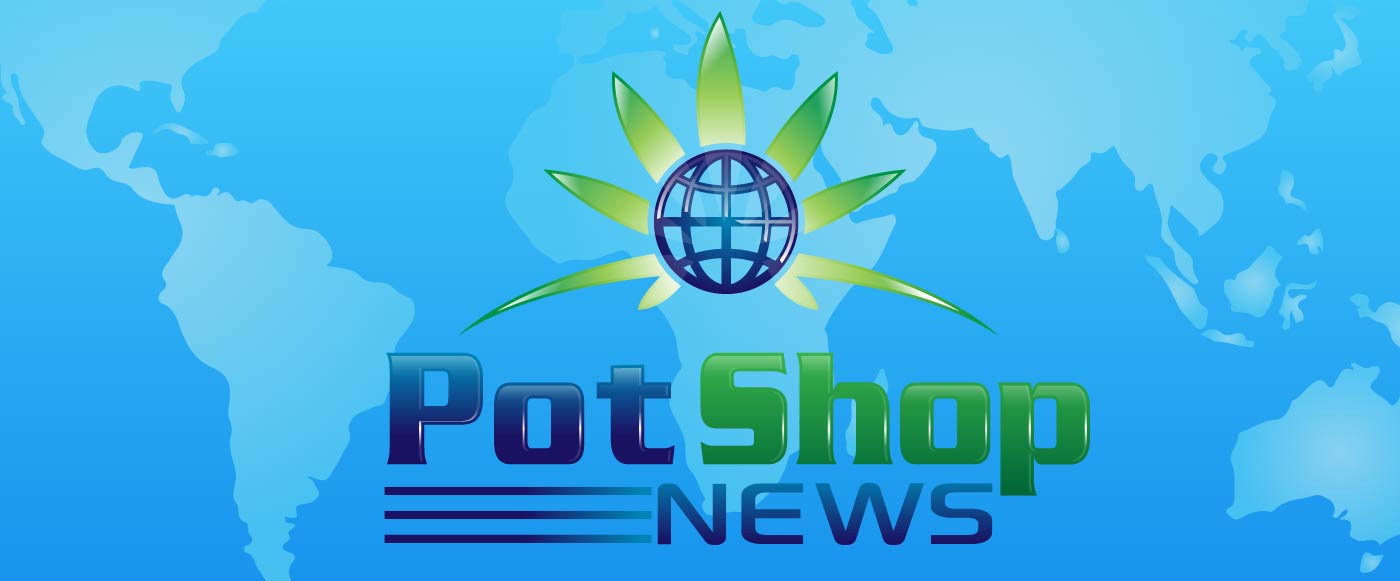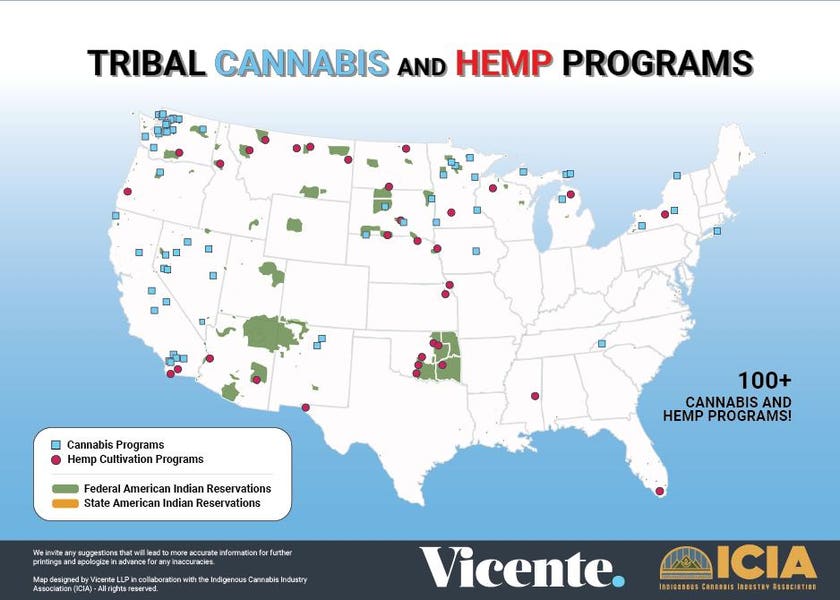[[{“value”:”
About one in four indigenous Tribes in the U.S. have active cannabis or hemp programs, according to a newly-released map from the Indigenous Cannabis Industry Association (ICIA) and law firm Vicente LLP.
Washington has the highest concentration of indigenous cannabis programs. Minnesota, Nevada and California also have high concentrations, showing that Tribal nations are increasingly partaking in growing legal weed and hemp markets.
Due to their sovereign status, Tribal cannabis dispensaries can get around local prohibitions, though for the most part, those dispensaries operate in states that already allows legal weed.
About 26% of the 574 federally recognized sovereign indigenous communities have cannabis or hemp businesses operating in them, including 52 Tribal communities operate federally approved hemp cultivation programs.
ICIA and Vicente developed their map using research and interviews with Tribal leaders, in order to assess the health of the emerging indigenous cannabis industry.
“This research project will highlight the thoughtful work that has gone into these sovereign regulatory programs as well as how these businesses affect local employment and revenue for community services,” said ICIA founder Rob Pero. “Together, we hope to inform, inspire and empower other Indigenous communities considering cannabis as well as policy makers around the world.”
The 2014 Wilkinson Memo
The federal government’s practice of allowing Tribal communities to make their own laws has made it easier to open a retail pot shop.
The Department of Justice’s 2014 Wilkinson Memo affirmed that the agency would deprioritize enforcing federal cannabis violations on Tribal land.
“The United States Attorneys recognize that effective federal law enforcement in Indian Country, including marijuana enforcement, requires consultation with our Tribal partners in the districts and flexibility to confront the particular, yet sometimes divergent, public safety issues that can exist on any single reservation,” said the memo, which was written by DOJ Director Monty Wilkinson.
Most of the indigenous communities with their own cannabis programs are geographically located within states that also have legal adult-use programs, such as New York, Michigan, Minnesota, Nevada, California and Washington.
“Indigenous cannabis programs are a vital piece of America’s cannabis movement,” said Andrew Livingston, Director of Economics and Market Analysis at Vicente LLP. “And these businesses deserve recognition. The goal of our study is to provide information on how different Indigenous communities have established their regulated cannabis programs, the size of the economic opportunity, and the ways that regulating cannabis can be structured in the future to further the goals of each community.”
For some indigenous communities, cannabis provides a way to generate wealth that is less reliant on federal aid, whose availability is becoming more precarious under the Trump Administration.
“One of the primary reasons the Indigenous Cannabis Industry Association was founded was to explore and implement self-reliant economic revenue streams that ensure financial sovereignty for our people – outside of gaming where applicable, but more importantly, outside of reliance on federal funding,” said Pero in a released statement in response to possible federal fund freezes from the Trump Administration in February. “The abrupt nature of this directive underscores the urgent need for tribes to strengthen their own financial security by investing in emerging industries where we hold unique advantages and have the potential to build thriving, self-sustaining economies.”
A decade of legal indigenous cannabis
The Squaxin Island Tribe opened the first state-recognized Tribal cannabis business in the country in November, 2015. The new store, which was opened in Washington, was just one of many offering cannabis in the state three years after voter legalized it.
Although it can easier for cannabis businesses to launch on Tribal land when the surrounding state recognizes legal weed, there is certainly demand for access to cannabis in states where it remains illegal.
The Eastern Band of Cherokee Indians opened, the Great Smoky Cannabis Company. the first medical cannabis dispensary in North Carolina a little over a year ago on 4/20 2024. The dispensary expanded to adult-use in August.
Other times, indigenous cannabis companies would spring up after a state voted to legalize, but before that state finalized the regulations to govern the upcoming cannabis market.
For example, the St. Regis Mohawk reservation, which straddles the border between upstate New York and Canada across the Lawrence River, exploded with pot shops shortly after New York legalized in the summer of 2022. Business owners on the reservation had the added benefit of being able to transport cannabis, sometimes on boat across the river, from the Canadian-side of the Tribal land.
Similarly, the White Earth Nation in Minnesota made an early move into cannabis shortly after the state legalized adult-use. Minnesota is currently preparing to hold its first license lottery with the hope of launching its own adult-use market before the end of the year. In the meantime, White Earth Nation will be among those getting the first shot at Minnesota customers as they are taking advantage of a deal with the state government allowing tribes to operate up to five dispensaries outside of Tribal land.
“}]] The ICIA and Vicente have mapped more than one in four indigenous communities in the United States that have launched cannabis or hemp programs. Read More


